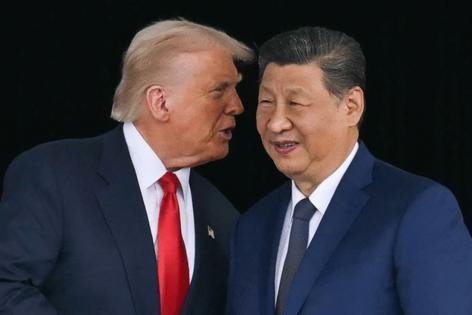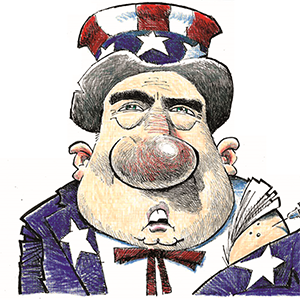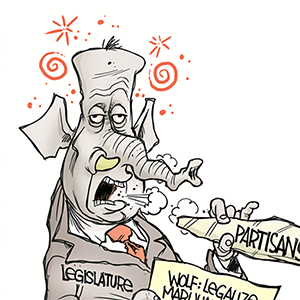China soy deal lifts US farmers but spotlights trade limitations
Published in News & Features
China’s commitment to buy at least 87 million tons of U.S. soybeans through the next several years provides long-sought relief to farmers, while at the same time highlighting the limitations of America’s reliance on the trading partner for its exports.
China has agreed to buy at least 12 million metric tons of U.S. soybeans this season, and a minimum of 25 million tons annually over the next three years, U.S. Agriculture Secretary Brooke Rollins said in a post on X. She added that China would also remove “unwarranted tariffs” on most U.S. agriculture including soybeans.
Soybean futures rose on the news, settling up 1.2% at $11.0775 a bushel in Chicago.
The details came after President Donald Trump said China will purchase “tremendous” amounts of American soybeans, following a meeting to hammer out a wide-ranging trade deal with his counterpart Xi Jinping. The president later wrote in a social media post that “farmers should immediately go out and buy more land and larger tractors.”
The outcome was welcome news for farmers — a key voting bloc for Trump and the Republican Party — who have been grappling with overflowing silos, with profits being squeezed by higher input costs and falling prices. Beijing has shunned U.S. beans so far this export season, using the commodity as a bargaining chip in its trade war with Washington.
“I don’t think I can stress enough how important this is to farmers because we’ve been waiting and waiting and waiting, and this is a glimmer of hope — so don’t dash my hopes again,” said Pam Johnson, an Iowa farmer.
Yet even as the agreement restores some optimism, analysts warn that the base numbers merely return trade to previous levels.
A commitment of 12 million tons for the current season is a “fairly sizable reduction from a historical standpoint,” said Brian Grete, a senior grain and livestock analyst at Commstock. In the longer term, purchases of 25 million tons a year would be “basically getting back to normal,” he added.
Last year, the U.S. exported about 27 million tons to China, according to U.S. Department of Agriculture data. Farmers reaped bigger rewards in the outcome of the trade war during Trump’s first term — after the so-called Phase One agreement in 2020, shipments to China rebounded to 34.2 million.
China, the world’s largest buyer of the oilseed mostly used to make pig and chicken feed, has drastically reduced its reliance on U.S. crop supplies since Trump’s first trade war, leaning more on top producer Brazil to meet its needs. At the same time, China’s appetite for U.S. soybeans may be tempered as the world’s second-largest economy struggles to regain growth momentum, limiting demand for animal feed and food.
The American Soybean Association noted that the commitments this time around are framed as minimums, and expressed hopes for growth in purchases beyond those levels.
“This is a meaningful step forward to reestablishing a stable, long-term trading relationship that delivers results for farm families and future generations,” Caleb Ragland, president of the ASA, said in a statement.
Farmers and analysts will be watching how quickly shipments will start to flow. Bloomberg reported Wednesday that the country has bought at least two cargoes of U.S. soybeans, its first known purchase this season.
The fact that Trump still has time in office puts him in position to ensure China remains accountable, said Randy Place, senior grain analyst at the Hightower Report. “Still having a few years left, he can hold them to that this year and next year and maybe the year after.”
Nebraska farmer Andrew Philips said he was cautiously optimistic, also hoping China follows through with more to come. He was heartened by a recent rally in soybean prices on increased expectations for a trade deal. “Still a ways away from some profitability numbers, but it’s a lot better than where it was,” he said.
April Hemmes, a grower in Iowa, said her phone has been pinging with texts as she chats with others about the details of the deal. She said the commitments wouldn’t prompt her to go out and buy land and tractors, as Trump urged.
“Our commodity prices haven’t kept up with the inflation of our inputs,” she said. “That’s the real battle we’re looking at here.”
(With assistance from Skylar Woodhouse.)
©2025 Bloomberg L.P. Visit bloomberg.com. Distributed by Tribune Content Agency, LLC.







Comments